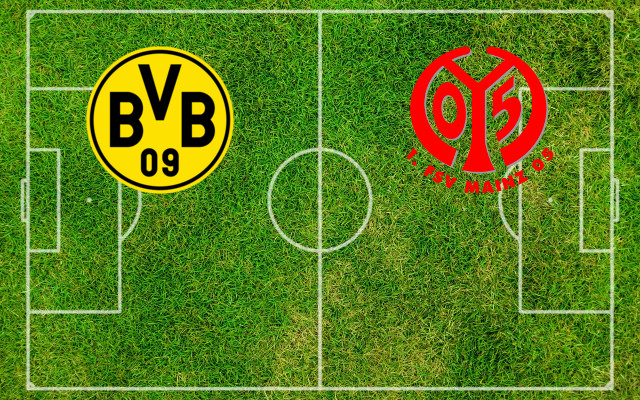Borussia Dortmund started their campaign in a home outing against tough opponents Mainz that ended in a less than convincing win for last season’s seconds. Going into the game, the main question was how head coach Thomas Tuchel would counter Mainz’s pressing high up the pitch and deal with three key players’ departure at the same time.
The visitors lined up in a 4-1-4-1, giving them defensive stability and also the option of quick transitions into attack after gaining possession. In Dortmund’s early phase of build-up, one of the two central midfielders – Frei or Serdar – stepped forward with Gbamin filling in their position. They chose a man-oriented defence, focusing on BVB’s midfield duo to disrupt their usual passing schemes. On their own half, Mainz formed a 4-5-1 and marked Kagawa closely.
Dortmund came on the pitch in their usual 4-2-3-1 with a lot of movement. Schmelzer usually ran higher up the pitch during possession, creating a 3-2-4-1. The midfield duo consisted of Sebastian Rode and Gonzalo Castro, two more physical players, an obvious choice against a pressing team like Mainz. The trio of attacking midfielders saw two new faces with Schürrle and Dembélé lining up along Shinji Kagawa behind lone striker Pierre-Emerick Aubameyang.
Mkhitaryan’s departure and Reus’s injury left the home side’s attack lacking the usual creativity and combination skills. Understanding this, Tuchel altered their game plan from last season. They tried to create overloads especially on the left flank with Schmelzer on the touchline and Schürrle roaming inside. Additionally to a numerical advantage which Mainz had no difficulties to deal with, this created space for Dembélé on the right, who often took on defenders. Rode and Castro both failed to take part in Dortmund’s build-up play and so the Frenchman’s services were needed in an earlier phase. Young right-back Felix Passlack usually shadowed Dembélé’s take ons, winning the ball as soon as possible. It was a tactic typical for Dortmund all over the pitch. They tried hard to regain possession high to prevent Mainz from capitalizing on their problems to switch into defence.
Mainz came to Dortmund with a clear plan to defend and they carried it out very well. The Black and Yellows couldn’t open up the defence for the most of the game due to their poor combination game and positioning and they couldn’t ensure a comfortable lead. While they had most of the ball – more than 75% in the first half –, they couldn’t turn it into clear-cut chances.
Tuchel tried to stop the lack of penetration by making a few adjustments at half time. Rode became a lone pivot, Castro joined Kagawa in the attacking line, the pair occupying both half spaces, and Schürrle got a wider position with Schmelzer staying deeper, a logical step after promising counterattacks from Mainz. The change worked well, but Mainz quickly adapted their own positioning and only Weigl’s introduction could improve Dortmund’s vertical play.
Overall, the match pointed out the problems Dortmund are still facing, but there were promising signs. Both Schürrle and Bartra showed that they’ve adapted to their new surroundings quickly, and the Black and Yellows might already have the answer for their creativity problem in Mario Götze (and Marco Reus’s return from injury). Despite losing the game narrowly at the end, Mainz also have positives to take away, as they look to secure a European qualification spot once again this season.








